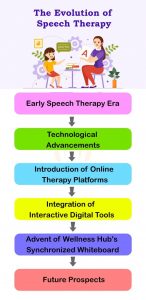Top 10 Speech Improving Exercises for Kids with Dysarthria
By Rajini D
Last Updated: February 23, 2024
Dysarthria, a speech disorder affecting countless children, can turn the simple joy of communication into a daily challenge. This condition, stemming from muscle weakness, affects how a child speaks, making it hard to articulate words clearly. But it’s not just about speech; dysarthria touches every part of a young life, from social interactions to self-expression and confidence.
Here’s the silver lining: targeted exercises can make a world of difference. They’re not just exercises; think of them as keys to unlock clearer communication and brighter smiles. That’s why we’re diving into the “Top 10 Speech-Improving Exercises for Kids with Dysarthria.” These aren’t just any exercises; they are carefully chosen activities designed to strengthen the muscles needed for speech, making every word a child says a little easier, a little clearer.
Understanding Dysarthria
Dysarthria may sound like a complex term, but it’s simply a way to describe challenges some children face with speech due to muscle weakness. Think of it this way: for these kids, the muscles they need to speak – like those in their lips, tongue, and throat – aren’t as strong or as responsive as they need to be. This can make their speech sound slurred or slow, and sometimes, it’s hard to understand what they’re saying. But why does this happen?
Well, the reasons can vary. Sometimes, dysarthria in children is due to neurological conditions that affect the brain and nerves, like cerebral palsy or muscular dystrophy. Other times, it might be the aftermath of a brain injury or a condition they were born with. What’s important to remember is that each child’s experience with dysarthria is unique.
There are different types of dysarthria too, each affecting speech in its own way. Some types make speech sound choppy, and others might make it sound nasal or breathy. Recognizing the type of dysarthria a child has is key to finding the most effective exercises for them.
Also Read: Understanding the Role of Speech Therapists in Online Settings
Importance of Speech Exercises
So, why are speech exercises so important for dysarthria? Imagine having a box of tools but not knowing how to use them. Speech exercises are like the instruction manual, helping children learn how to use their ‘speech tools’ – their lips, tongue, and lungs – more effectively. These exercises are designed to strengthen these muscles, making it easier for kids to articulate words and control their breath while speaking. The goal? Clearer, more confident speech.
Regular practice of these exercises can lead to improved articulation, meaning kids can pronounce words more clearly. They also help in building strength in the muscles used for speaking and breathing control, making speech not only clearer but also more consistent. This can be a game-changer in daily life, making conversations less of a task and more of a joy.
For specific exercises targeting jaw movement, check out our article on jaw exercises for speech development.
Dysarthria Speech Challenges and Targeted Exercises
| Speech Challenge | Description | Recommended Exercises | Benefits |
|---|---|---|---|
| Weak Lip Movement | Children with dysarthria often have difficulty with clear lip movements, affecting their speech clarity. | Blowing Bubbles, Lip Stretching Exercises | These exercises improve the strength and coordination of lip muscles, leading to clearer articulation and speech. |
| Poor Tongue Control | Challenges in controlling tongue movements can lead to unclear articulation and difficulty forming sounds. | Tongue Twisters, Mewing Technique | These activities enhance tongue mobility and precision, resulting in improved clarity and accuracy in speech. |
| Breathing Difficulties | Some children may struggle with maintaining steady breath control during speech, impacting their speech flow and clarity. | Breathing Exercises, Balloon Blowing | These exercises strengthen respiratory muscles and improve breath control, supporting clearer and more consistent speech. |
| Reduced Jaw Movement | Limited jaw movement can make it difficult for children to articulate words clearly. | Jaw Strengthening Exercises (e.g., wide jaw movements) | These exercises enhance jaw strength and flexibility, aiding in better articulation and speech clarity. |
| Difficulty with Rhythm and Pace | Children with dysarthria may struggle with maintaining a consistent rhythm and pace in their speech. | Rhythmic Speaking, Singing Simple Songs | These exercises help in regulating speech rhythm and pace, making speech more fluid and understandable. |
Top 10 Speech-Improving Exercises
1. Lip Strengthening: Let’s start with something both fun and beneficial – blowing bubbles! It’s not just playtime; it’s a fantastic way for kids to strengthen their lip muscles. Another enjoyable exercise is to make exaggerated lip movements, like saying “ooooo” and “eeeeee.” These activities encourage kids to use their lips more, which is essential for clear speech.
2. Tongue Twisters and Articulation: Tongue twisters aren’t just a tongue-tangling challenge; they’re great for improving articulation. Repeating phrases like “She sells sea-shells by the sea-shore” helps kids practice producing challenging sounds and improves their speech clarity.
Also Read: Speech Sound Disorders
3. Breathing Exercises: Simple activities like blowing up balloons are more than just a bit of fun. They’re a fantastic way to help children control their breathing, which is crucial for speech. Controlled breathing supports clearer and more consistent speech, making conversations smoother.
4. Rhythmic Speaking: Singing simple songs or practicing rhythm exercises can dramatically improve speech fluidity and intonation. Music is not only enjoyable but also a powerful tool in speech therapy, helping children naturally improve their speech patterns.
5. Mirror Exercises: Encouraging children to stand in front of a mirror and mimic facial expressions can significantly improve their speech. This exercise helps kids become more aware of their mouth movements, which is key for articulation.
6. Puppetry and Gesture Use: Using sock puppets or hand gestures during storytelling can enhance a child’s expressiveness. These fun activities encourage broader facial movements and gestures, aiding in speech clarity.
7. Jaw Strengthening: Exercises like wide jaw movements help strengthen the jaw, which is vital for clear speech. You can make this exercise a game by pretending to yawn exaggeratedly or by mimicking the opening and closing of a book with the jaw.
8. Interactive Speaking Games: Games like ‘fill-in-the-blank’ sentences not only make learning fun but also improve speech. These games encourage children to think about words and how to articulate them clearly.
Explore our article on Speech Therapy for Autism.
9. Oral Motor Exercises: Activities like sucking through straws or chewing gum help strengthen the muscles in the mouth. These exercises are great for improving overall speech clarity and are especially helpful for children who need extra support with muscle strength in their mouths.
For a comprehensive list of oral motor exercises that can aid in speech improvement, visit our detailed page on this topic.
10. Mewing Technique: This involves teaching children to correctly position their tongues on the roof of their mouth. This exercise, although a bit more advanced, can significantly improve speech clarity by strengthening the tongue, a crucial muscle in speech production.
Exercise Schedule for Dysarthria Improvement
| Exercise Name | Frequency | Duration | Goals | Notes (for Personalization) |
|---|---|---|---|---|
| Lip Stretch Exercises | Daily | 10 mins | Improve lip movement control | Adjust duration as needed |
| Tongue Strengthening | Twice a week | 15 mins | Enhance tongue mobility | Monitor for fatigue |
| Breath Control Practice | Thrice a week | 20 mins | Increase breath support | Incorporate with speech practice |
| Vocal Exercises | Daily | 10 mins | Improve vocal clarity | Pair with melody for engagement |
| Articulation Drills | Four times week | 15 mins | Enhance speech articulation | Focus on challenging sounds |
Also Read: Speech and Language Milestones
Incorporating Fun in Exercises
Making speech therapy fun is crucial, especially for kids. After all, the more enjoyable the activity, the more engaged and motivated they’ll be to participate. But how do we make speech therapy fun for kids? Here are some creative tips:
- Turn Exercises into a Game: Children love games, and turning speech exercises into a playful challenge can make a world of difference. For instance, create a treasure hunt where each clue involves a speech exercise, or make a game of Simon Says with speech-related actions.
- Use Stories and Role-Play: Children’s imaginations are limitless. Use storytelling and role-playing to practice speech exercises. Have them narrate a story or play the part of a character, focusing on clear speech as part of their role.
- Incorporate Their Interests: Whether it’s dinosaurs, space, or fairy tales, weaving their interests into speech exercises can make the sessions more engaging and relevant to them.
- Reward Efforts, Not Just Success: Celebrate their efforts, no matter how small. This could be through verbal praise, stickers, or a small treat. The key is to make them feel successful and motivated.
For additional creative tips on engaging children in therapy, particularly those with autism, explore our article on Tips for Parenting an Autistic Child.
Role of Family and Environment
Family involvement is a cornerstone of effective speech therapy. When families participate in exercises, it not only reinforces the learning but also provides emotional support and encouragement.
- Family Participation: Encourage family members to join in the exercises. It could be as simple as practicing speech exercises together during family time or turning it into a fun competition among siblings.
- Create a Supportive Environment: A calm, positive environment at home is essential. Dedicate a quiet space for practice, free from distractions. This will help your child focus and feel comfortable during their exercises.
- Consistency is Key: Regular practice is crucial for progress. Encourage daily practice, but keep it light and enjoyable. Consistency will help in reinforcing what they learn in therapy sessions.
- Be Patient and Understanding: Always approach sessions with patience. Understand that progress takes time, and each child’s pace of learning is different.
The role of parents in therapy is pivotal. Gain more insights from our article on the crucial role of parents in online speech therapy.
Progress Tracker for Speech Exercises
| Week | Exercises Completed | Progress Notes | Next Week’s Goals |
|---|---|---|---|
| 1 | Lip Stretch, Breath Control | Initial challenges with lip stretches, good breath control | Improve lip stretches |
| 2 | Tongue Strengthening, Vocal | Better at lip stretches, tongue exercises going well | Focus on vocal clarity |
| 3 | Articulation Drills, Vocal | A Notable improvement in articulation, vocal exercises more consistent | Increase the difficulty of drills |
| 4 | All assigned exercises | Good progress overall needs more practice on breath control | Perfect breath control techniques |
Also Read: Navigating Online Speech Therapy for Non-Verbal Children: A Guide for Parents and Educators
Conclusion
It’s important to remember that the path to clearer speech is a journey, not a sprint. Regular practice and a healthy dose of patience are key ingredients in this journey. Each exercise we’ve shared is a step towards helping your child find their voice, a voice that’s as unique and special as they are.
To all the dedicated parents and caregivers out there, your role in this journey is invaluable. Your support, encouragement, and belief in your child’s abilities can make a monumental difference. Remember, every small progress is a victory, every word a milestone. Celebrate these moments, cherish them, and use them as fuel to keep going, even on days when progress seems slow.
It’s also important to remember that you’re not alone in this. At Wellness Hub, we understand the challenges and joys of this journey. Our resources, guidance, and community support are here to assist you every step of the way. Together, we can help your child unlock their full potential, one word at a time. So, keep going, stay patient, and believe in the incredible power of persistence and love. Your child’s journey to clearer speech is a path filled with hope and endless possibilities.
Frequently Asked Questions
1. What is Dysarthria in Children?
Dysarthria in children is a speech disorder resulting from muscle weakness, affecting their ability to speak clearly. It can be caused by neurological conditions, brain injuries, or congenital factors, leading to challenges in articulating words.
2. How Can Exercises Help Children with Dysarthria?
Exercises designed for children with dysarthria focus on strengthening the muscles used in speech. These activities enhance articulation, breathing control, and overall speech clarity, making communication easier and more effective for the child.
3. Are There Fun Ways to Do Speech Therapy at Home?
Absolutely! Speech therapy can be made fun by incorporating games, storytelling, and the child’s interests into exercises. Activities like blowing bubbles, singing, and interactive speaking games not only engage the child but also effectively improve their speech.
4. What Role Do Parents Play in Speech Improvement for Kids with Dysarthria?
Parents play a crucial role in their child’s speech improvement. By participating in exercises, creating a supportive environment, and practicing consistently at home, parents can significantly enhance the effectiveness of speech therapy.
5. How Long Does It Take to See Improvement in a Child with Dysarthria?
The time it takes to see improvement varies for each child, depending on the severity of dysarthria and the consistency of practice. Regular exercises and a patient, supportive approach are key to gradual and steady improvement.
6. Can Dysarthria Be Completely Cured in Children?
The outcome of dysarthria treatment varies. While some children may experience significant improvement, others might continue to face challenges. However, regular speech therapy exercises can greatly enhance speech clarity and quality of life.
7. What Are the Best Resources for Helping Children with Dysarthria?
Resources like specialized speech therapists, online platforms like Wellness Hub, and supportive communities can be immensely helpful. Wellness Hub offers guidance, articles, and tools specifically designed for children with speech disorders.
8. What Are Some Simple Speech Exercises I Can Start with for My Child with Dysarthria?
Simple exercises like blowing bubbles to strengthen lip muscles, practicing tongue twisters for articulation, and mimicking facial expressions in front of a mirror are great starting points. These activities are not only effective but also enjoyable for children.
9. How Can I Make Speech Exercises a Regular Part of My Child’s Routine?
Integrating speech exercises into daily activities can make practice more consistent. Set aside a specific time each day for these exercises, perhaps incorporating them into playtime or family activities. Consistency and making the exercises fun are key to integrating them into your child’s routine.
10. Is Professional Speech Therapy Necessary for Children with Dysarthria?
While home exercises are beneficial, professional speech therapy is often recommended for children with dysarthria. A speech therapist can provide tailored exercises and strategies suited to your child’s specific needs, ensuring more targeted and effective treatment.
About the Author:
Rajini Darugupally
M.Sc., Speech-Language Pathologist (9+ years of experience)
Rajini is a passionate and dedicated Speech-Language Pathologist with over 9+ years of experience, specializing in both developmental speech and language disorders in children and rehabilitation in adults. Driven by a desire to empower each individual to find their voice, Rajini brings a wealth of experience and a warm, genuine approach to therapy.
Currently, at Wellness Hub, she thrives in a team environment that values innovation, compassion, and achieving results for their clients.
Connect with Rajini to learn more about how she can help you or your loved one find their voice.
Book your Free Consultation Today
Parent/Caregiver Info:
Client’s Details:
* Error Message









